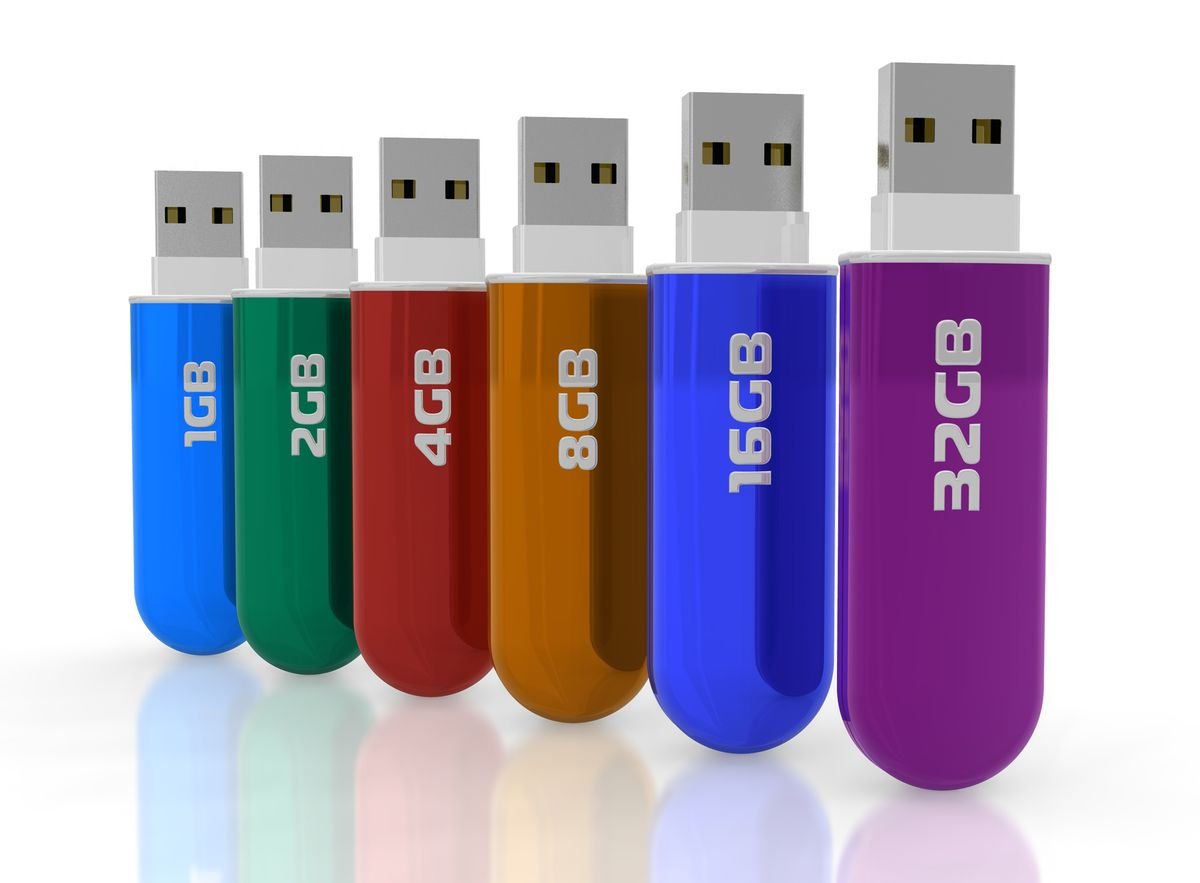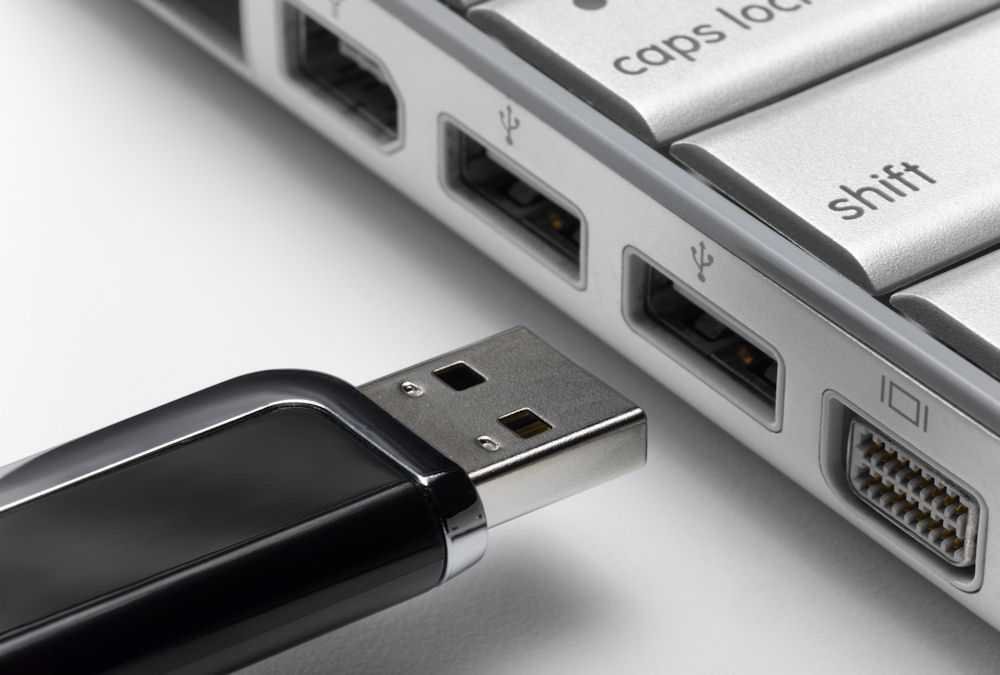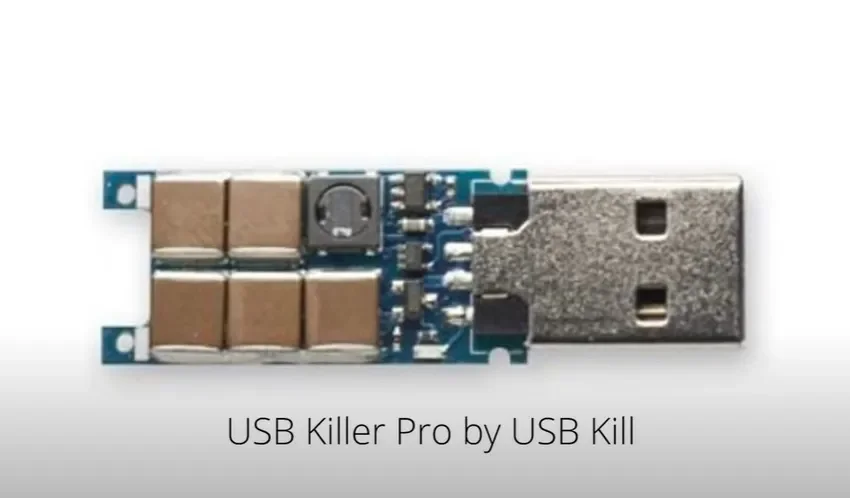Her technique attacks USB Killer Attack was launched in 2015 and aims to destroy your computer hardware beyond repair.

Usually USB drives in the hands of a hacker serve as a means to inject malware onto your computer, with the ultimate goal of financial gain. But there are worse situations than that, like finding yourself with a burnt motherboard because an unconscious person wanted to laugh.
Universal Serial Bus (USB) drives are the most convenient portable data storage devices. Small as a lighter and with a capacity that can reach 1TB, that is, as much as the hard disk that most of you have in your machines.
But you should watch out for this cute USB drive. Besides carrying malware, a USB drive can also act as a USB killer to permanently damage your computer. But let's see how a USB killer works and what you can do to prevent it?
What is USB Killer?

As the term suggests, a USB killer is a modified USB drive that can destroy a device when inserted into the device's USB port.
To achieve its goal, a USB Killer repeatedly delivers a surge of electrical discharge (210–220 volts) to the connected device from the data side, not the charging side. As a USB port is designed to handle only 5 volts, this repeated surge destroys the host device's electrical system.
The first USB Killer was created in 2015 by a Russian computer researcher nicknamed 'Dark Purple'. And the idea behind its design was to test how well a digital device could withstand power surges.
The matter did not stop there as in 2016 one company from Hong Kong made and sold USB Killer for $50 each, on the grounds that it allows businesses to check whether their devices are vulnerable to USB power attacks.
Now you can find USB Killer even for just 3 euros, which makes them accessible to everyone. He also doesn't want anyone can take a simple USB ionic air purifier, modify it to act as a USB Killer.
How a USB Killer works

A USB killer device has many capacitors which can store electrical energy. When you plug it into a computer, it draws power from the USB port to charge its capacitors.
Once they fully fill the USB kill, it discharges its power (200 volts or more) momentarily to the data lines of the same USB port. This damages the receiving device at the very least, since the data pins are designed to handle a small amount of voltage, enough to send and receive signals.
Today, USB killers have evolved from simple plug-and-zap devices to powerful killers with advanced functionality.
For example, hackers can now buy a USB killer with an internal rechargeable battery. Such a USB Killer can destroy the host device even when the device is turned off, since it does not need to charge. It has the battery for the job and is ready charged.
Some advanced attack features of today's USB killer include:
- Remote Activation: One can initiate an attack through a remote control.
- Timed attack: A cybercriminal can schedule a date and time to launch the attack.
- Trigger smartphone: One can manage attacks through Android or Apple smartphones.
Also, hackers can easily obtain various adapters to compromise various devices, via HDMI port, micro USB and others.
The problem can easily extend outside the world of hackers and become a trigger for anyone who wants to take revenge or just make fun.
A former student of St. Rose in the US destroyed 59 computers, seven monitors computers using a USB Killer. His criminal act destroyed $51.109 worth of equipment.
USB Killers are sold online, and easily one can buy. With a bit of luck, he can "deliver" it into the victim's hands and from then on, curiosity will do its job.
So take the necessary steps to protect your devices from USB Killers attacks.
Can you spot a USB Killer device?

Unfortunately, you can't tell a regular USB drive from a USB killer just by looking at it. You need to open the case of a USB drive to make the determination. A typical USB Killer has enough capacitors to store power from a regular USB port.
If you want to evaluate whether a USB drive is USB Killer or not without opening its case, you will need a USB killer detector.
How to Protect Yourself from a USB Assassination Attack
A USB you just found in your garage or on your desk could have been strategically left there to carry out a USB killer attack.
A USB that came in the mail, from an unknown sender, along with the message “View photos” we would suggest you not to use it.
Therefore, do not connect an unknown USB drive to your computer, even if one detector USB Killer tells you that you are safe.
Unknown USB drives are a serious security threat to both businesses and individuals. However, curiosity makes people plug in USB drives they find randomly even on the street.
Researchers from the University of Michigan, the University of Illinois Urbana-Champaign and Google distributed about 297 USB flash drives on a university campus. Sta their published results, report that 45 percent of USB drives were received and connected.
Also train your employees. Your employees play the most critical role in preventing USB Killers from damaging your computer.
Therefore, run regular cyber security awareness training programs in your company. Make your employees understand how dangerous it can be to connect an unknown USB drive to a company computer.





